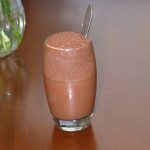- Spread a little sunshine
- Chocolate love
- News
Spread a little sunshine this winter…All about Vitamin D
In the winter months, most of us aren’t getting much sunlight. It’s still dark when we leave our houses and often dark by the time we get home. When we go outside, we’re usually bundled up from head to toe. Not only does this tend to affect mood, but we also depend on sunlight as a source of Vitamin D. Even if someone were to go out dancing in the snow in a bathing suit in the winter months, in many areas it’s still impossible to get all of the vitamin D needed for good health. Skin pigmentation, age, sunscreen, and geographic location all play a role in determining how much vitamin D the body produces from sunlight.
When people think of vitamin D deficiency, they tend to think of rickets, or the bowed legs seen in children. Actually, the problem is much more widespread and affects most systems in the body. Researchers are increasingly learning that most people have Vitamin D levels are below the ideal, and this seems even more common in people avoiding gluten for various reasons. Recent studies are reinforcing the importance of vitamin D, showing that deficiency can cause joint pain and bone weakness, and lower vitamin D levels are linked to higher rates of cancer, Multiple Sclerosis, increased fall rates, lowered immune function, depression and more.
Vitamin D is especially important to people with Celiac disease, gluten intolerance and people following a gluten free/casein free (GFCF diet). Celiac disease often causes great damage to the small intestine, and the small intestine is where our bodies absorb vitamin D. Osteoporosis and osteopenia are frequently seen in Celiac patients, and Vitamin D is an essential component to both calcium absorption and the formation of healthy bones. Additionally, untreated Celiac disease also may lead to fat malabsorbtion, and vitamin D is a fat soluble vitamin.
Fortified milk and milk products are one of the few commonly eaten food sources of vitamin D. However, usually eating those foods alone isn’t enough to do the trick, and many gluten free folks are lactose intolerant, or avoid dairy products due to following a gluten free, casein free (GFCF) diet. The NIH just released a statement about a study showing that autistic boys tend to have thinner bones.So regardless of why you are GF, it is important to speak to your doctor and have your vitamin D levels tested.
There are several ways to get vitamin D in the winter months:
- Eat vitamin D rich foods: fortified dairy, cod liver oil or other fatty fish, are good sources. For vegetarians or vegans, there are small amounts found in eggs, or some in mushrooms exposed to UV light.
- Take vitamin D3 supplements: Many doctors recommend high doses of vitamin D initially to normalize vitamin levels in people who are deficient, but since Vitamin D is fat soluble and stored in the body, at some point it is possible to get an excess. Most people have vitamin D levels in the 20-30 range, and you don’t hit a risk of toxicity until the 100+ range, so that’s usually not an issue.
- Take a vacation to somewhere warm and sunny: totally self explanatory, and my personal favorite way of getting vitamin D. However, this doesn’t mean that you need to sunbathe all day. Experts say that 15-20 minutes of sun in most warm areas 3-4 times a week is usually all that is needed. However, this does differ by season and latitude.

Chocolate love:
I love chocolate. So, for the sake of research, I tried a range of gluten-dairy-soy free chocolate bars and rated them. Yes, I had help, and I’ve been working my way through them since last May.
Here are a few of my favorite gluten and dairy free chocolate recipes:
Chocolate Egg Cream: This old fashioned drink is really easy to make and it’s delicious. Although it’s called an egg cream, it’s actually vegan.
Amazing Chocolates or Hazelnut Buttercups. These MYO chocolates are delicious, and pretty easy to make, too.
Tuxedoed Strawberries Fruit in tasty formal ware. What’s not to love?
Chocolate Raspberry Pie Yes, there’s a secret ingredient, but don’t let that scare you. Bloggers at the Washingtonian tried it and gave it a thumbs up!
News:
- WebMD shared some of my tips for managing weight and hypothyroidism
- Children’s National Medical Center in DC has a really neat set of gluten-free cooking classes in March, and of course, it’s raising funds for a great cause.
- Gluten-free foods with wheat? Yep, really. It’s been done in Europe for years, but never caught on in the U.S. Dr. Schär is launching a new line, so we’ll see if people are willing to buy those products now.
- A new meta-analysis study links Celiac with fertility problems (you may need to sign up for free to read the Medscape article)
Harris Whole Health offers individual sessions and group classes to help people eat healthier and feel better! Cheryl works with people to feel and look their best with a range of specialties, including Celiac Disease, food allergies, pregnancy, breastfeeding, vegetarian and vegan diets, preventing diseases and “whole foods” eating. Let’s get you on your way to achieving your goals. For an appointment with Cheryl Harris, Registered Dietitian and Nutritionist, please click here, email or call 571-271-8742


